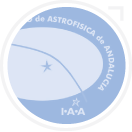IASB - Institut d'Aéronomie Spatiale de Belgique
The Planetary Aeronomy Division has acquired international recognition in various topics on planetary atmospheres. The expertise encompasses observations, such as remote sensing of the characteristics of the atmospheres, as well as modelling.
The IASB team has been involved in space missions (SPICAM/MEx, SPICAV-SOIR/VEx, Phoenix on Mars, Rosetta, and NOMAD on ExoMars TGO 2016). In particular IASB is Principal Investigator (PI) for the SOIR/VEx and NOMAD/ExoMars instruments. Spectroscopic remote sensing of the composition of planetary atmospheres relies on laboratory measurements of reference UV, visible and IR spectroscopic data and on the development and implementation of up-to-date radiative transfer codes (including aerosols). Interpretation of the observed data is also based on atmospheric models (Mars GCM, cloud microphysics, etc.).
Previous related projects
-
CROSSDRIVE FP7 project (2014-2016). This project is focused on the realization of innovative tools and techniques for the visualization and sharing of Mars data to strength collaborative science data analysis and real-time operations. A specific focus is given to the preparation of the Exomars 2016 and 2018 missions. Objectives of the proposal are: (1) Mobilize the best expertise in the field of Mars science data collection and analysis to study and propose synergic combinations and benchmarking of selected data sets; (2) Deploy a core team expert of 3D visualization, computing and virtual reality collaborative systems to prepare an innovative framework for data analysis and sharing ; (3) Test and exercise the proposed systems in view of the ExoMars rover and orbiter missions by using actual data (MEx, MRO, MER and MSL).
-
EUROVENUS FP7 project (2014-2016). EuroVenus stands for European Unified Research on Observations of Venus using coordinated Space- and Earth-based Facilities. It is a project funded by the EU within the Seventh Framework Programme for Research and Technological Development, EU's main instrument for funding research in Europe. The goal of this proposal is to investigate in detail the dynamics and composition of the middle and lower atmosphere of Venus by combining data from Venus Express instruments (VIRTIS, VMC, SOIR) with simultaneous data acquired from several ground-based telescope facilities during the course of ESA's Venus Express mission.
-
IUAP Planet TOPERS (2012-2017). Planet TOPERS (Planets, Tracing the Transfer, Origin, Preservation, and Evolution of their ReservoirS) is an Inter-University Attraction Pole (IUAP) financed by the Belgian Science Policy (BELSPO) and addressing the question of habitability in our Solar System.
-
SOIR/Venus Express. Venus Express is ESA's first mission to Earth's nearest planetary neighbour, Venus. The mission was born after ESA asked for proposals, in March 2001, suggesting how to reuse the design of the Mars Express spacecraft. Venus Express was launched in November 2005 and inserted into orbit around Venus in April 2006. IASB is has designed the SOIR instrument, one of the 3 channels of the SPICAV/SOIR instrument on board Venus Express. IASB is also responsible for the data pipeline and archiving of the SOIR data.
-
NOMAD /ExoMars TGO 2016. NOMAD is a 3-channel spectrometer developed by an international team that was selected from many proposals for the Trace Gas Orbiter that will launch in January 2016. The aim of NOMAD is to better characterize the atmosphere of Mars - measuring vertical profiles of various species at different longitudes, latitudes and seasons; mapping possible sources and sinks of rarer gaseous species - for example methane; examining aerosols and their fluctuations over a Martian year. IASB is the PI institute of NOMAD.

It brings expertise and knowledge regarding remote sensing as well as modelling (1D, 3D GCM) of planetary atmospheres (Earth, Mars, Venus). The main activities developed at IASB relative to remote sensing involve: research in radiative transfer modelling; spectroscopy laboratory measurements (results included in HITRAN and GEISA databases) and theory (e.g. line shape, line mixing) with implementation in radiative schemes; design, manufacturing and operation of IR and UV space instruments as well as ground-based instruments used for validation (Earth); impact of aerosols, dust and clouds on radiative transfer through atmospheres.
The IASB will participate actively in the modelling and analysis of water vapour, aerosols and trace species in the terminator (WP4, WP5 and WP6), and in the development of synergist tools for retrieval of carbon monoxide (WP1). It will be responsible for the activities linked to the management and coordination (WP11) and science dissemination and exploitation (WP9) and the development of and implementation of the new modelling and retrieval technique concerning the terminator (WP6), as well as of the follow-up of the development of new tools for the detection of clouds on Mars (WP4) and the determination of dust properties and impact on the retrieval of ozone (WP5). It will coordinate the improvement of the analysis of solar occultation observations (WP6) and will coordinate modelling of trace gases at the terminator (WP6). Benefiting from these experiences, it will participate to the work of the development of new synergistic tools (WP1) and will be contributing to WP10 (Public Communication and Outreach), assuring the dissemination of project results to the general public.


































